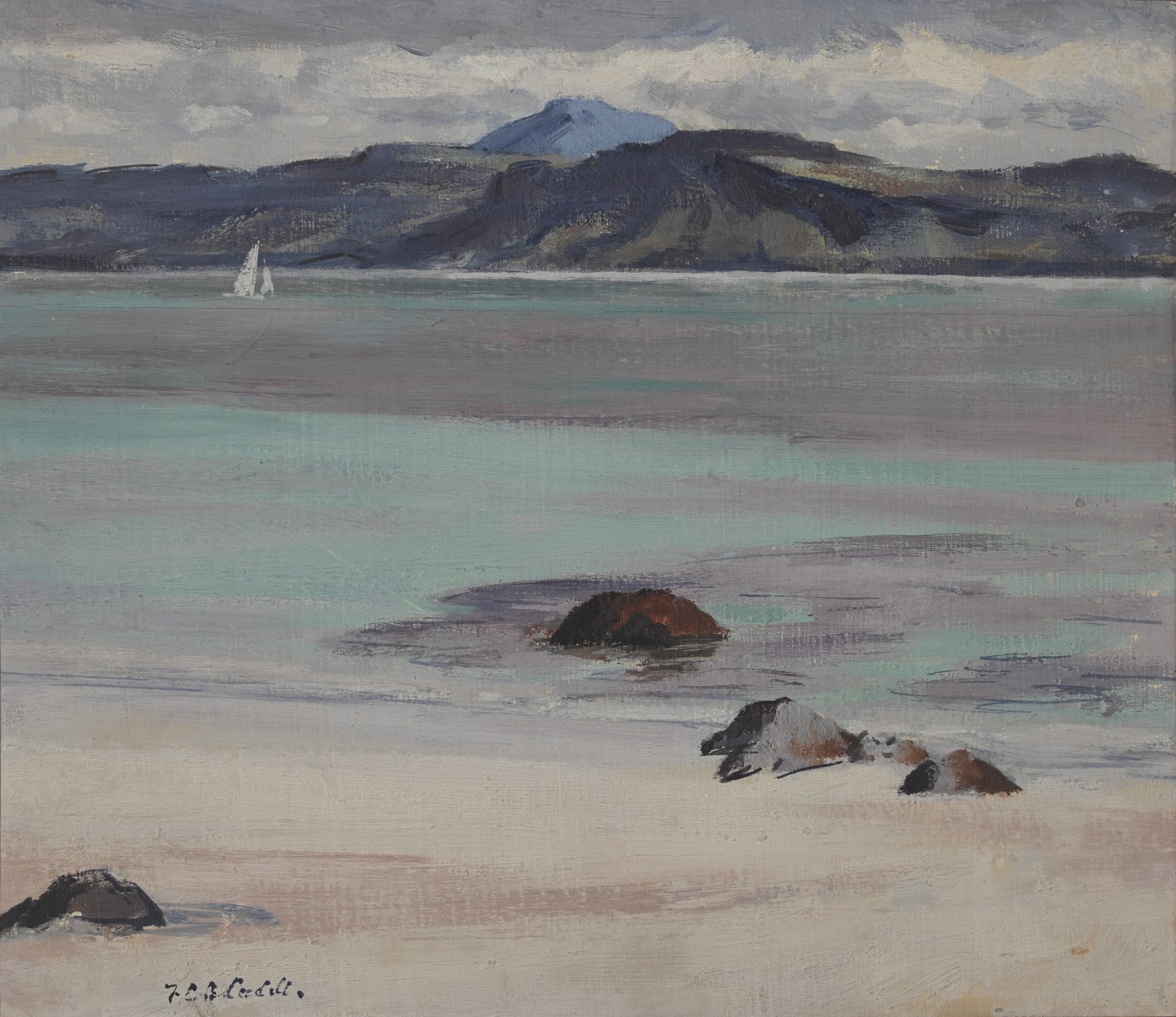DESCRIPTION
In 1898 Cadell left Edinburgh aged 16 to attend art school in Paris where he stayed on and off until 1905. His early exposure to the Impressionists underlies the technical freedom of his early work, but so too does the impact of Manet and Whistler, playing on their absorption with the pictorial effects of black and white. His swagger portraits of elegant women in his New Town studio were a contemporary take on the fashionable portraiture of the Glasgow Boys such as Lavery (with whom he exhibited); and were a great commercial success.
DETAILS
-
Artist
Francis Campbell Boileau Cadell
-
Date
c. 1914
-
Medium
Oil on millboard
-
Object number
151
-
Dimensions unframed
45.7 × 35.5 cm
-
Dimensions framed
72 × 62 cm
-
Marks
Signed bottom left
-
Subject
ARTIST PROFILE
Francis Campbell Boileau Cadell RSA RSW, 1883-1937
Born in Edinburgh, Francis Campbell Boileau Cadell was the child of a distinguished surgeon. Brought up in the Georgian New Town, he attended Edinburgh Academy but left at sixteen to study art in Paris at the Académie Julian. The next seven years were spent either living in Paris or visiting it regularly from Edinburgh. In 1906 he capped his studies with a year at the Art Academy in Munich.
His youthful work reveals a debt to the Impressionists, taken to extremes following a revelatory trip to Venice in 1910. Back in Edinburgh, Cadell embarked on a series of swagger portraits, still-lives and interiors staged in his elegant New Town Studio which are preoccupied with the possibilities of mirrored reflections and the tonal effects of black and white in the manner of Whistler and Manet.
At the outbreak of war, Cadell’s reputation was at a peak. The youngest by almost ten years, Cadell was the only Colourist to fight in WW1 serving continuously on the Western Front and was twice wounded. Returning to Edinburgh in 1919, he brought with him Charles Oliver, who became his life-long partner and sometime model.
With Peploe’s encouragement Cadell turned to painting interiors and still lifes in planes of vivid colour and geometric forms verging on the abstract. His brilliant handling of colour was used to great effect on his annual visits to Iona, capturing the intense light refracted off the sea.
Never business-like Cadell fell prey to the collapse of the art market following the 1929 crash. He died destitute in 1937, aged 54.











